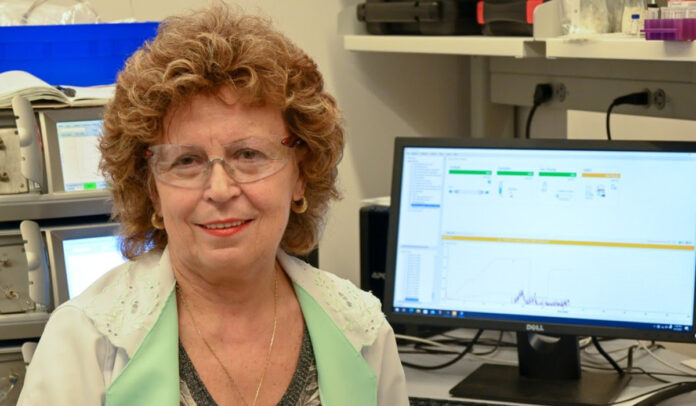
By Tracy Turner
She got the call while riding as a passenger in their car as her husband drove.
The Ohio State University College of Food, Agricultural, and Environmental Sciences Distinguished Professor of Food, Agricultural and Biological Engineering and professor of chemical and biomolecular engineering, immediately began screaming. With joy.
The call was to notify Judit E. Puskas that she had just been elected to the National Academy of Engineering Class of 2023 in recognition of sustained excellence in innovation and education, one of the highest professional distinctions an engineer can receive.
The recognition honors outstanding contributions to “engineering research, practice, or education,” and to “the pioneering of new and developing fields of technology, making major advancements in traditional fields of engineering, or developing/implementing innovative approaches to engineering education.”
“I cannot explain what this means to me—it’s like winning an Oscar,” Puskas said. “I was so honored and excited because this independent body was validating my entire career, my entire body of work.”
Recognition
Puskas is internationally recognized for her accomplishments in rubber technology—developing polymers and biomaterial invention and green engineering implementation—in both industry and medicine.
A native of Hungary, her career has spanned over 40 decades, two continents and three countries, both in industry and in academia. Her body of work includes over 400 technical publications and 35 issued patents.
She was elected to NAE last month for her work co-inventing a U.S. Food and Drug Administration-approved, life-saving coronary stent coating and fundamental research and scale-up of polymerization processes.
Puskas, who joined CFAES in 2019 as a professor in the Department of Food, Agricultural and Biological Engineering, is the co-inventor of the biocompatible polymer used to coat the Boston Scientific-licensed Taxus coronary stent, which has since been implanted in more than 10 million patients. With first-year sales of more than $3 billion, it is considered the most successful medical device ever launched.
Additionally, Puskas is a Fellow of the American Institute of Medical and Biological Engineering and was elected to the National Academy of Inventors in 2020, which is the highest professional distinction accorded solely to academic inventors. She’s also the first woman to win the Charles Goodyear Medal, the highest honor conferred by the American Chemical Society’s Rubber Division.
Background
Puskas attributes the start of her career to her grandmother Maria Kis, who Puskas says, “worked 12-hour shifts at the age of 66 to put me through university so I could become a research scientist.”
Puskas graduated in 1977 from the Technical University of Budapest, where she earned a master’s degree in polymer science and also met and married her husband, Gabor Kaszas, of 46 years. She also holds a PhD in plastics and rubber technology from the Hungarian Academy of Sciences. While still in Hungary, she and her husband began working in a research institute specializing in microchip fabrication, working to reverse engineer the Intel 8080 chip. It was there that she published her first research paper.
Puskas moved to the United States in 1980, when her husband was offered a position at the University of Akron, where she also began working in controlled carbocationic polymerization. The couple and their two children later moved to Canada in 1989, where Puskas and her husband began working in industry, at the Polysar Rubber Co.
After several years working in industry, Puskas was offered a position at the University of Western Ontario, where she was tenured in 1998. She returned to the University of Akron in 2004, where she worked until coming to Ohio State in 2019. Her husband joined the Goodyear Tire and Rubber Co. in 2006. After retiring in 2016, he started to work again with his wife as a volunteer.
Puskas’ research has included creating safer breast implants to help women after a mastectomy, designing a safe and comfortable COVID-19 face mask and finding an alternative domestic natural source of rubber. Currently, the U.S. has no domestic natural rubber and relies on a supply from southeast Asia.
Puskas calls her research, her career, and her life accomplishments the embodiment of the “American Dream.”
“I’m an immigrant who came to this country with little English language,” she said. “And now, I’m a U.S. citizen and doing this work. It’s a very good feeling when you do research, and it ends up saving people’s lives.”
(Those wishing to support Puskas’ research can donate to the CFAES Department of Food, Agricultural and Biological Engineering Innovation Fund for Bio-Based Polymers (#316979) or contact the CFAES Office of Advancement at 614-292-0473.)











